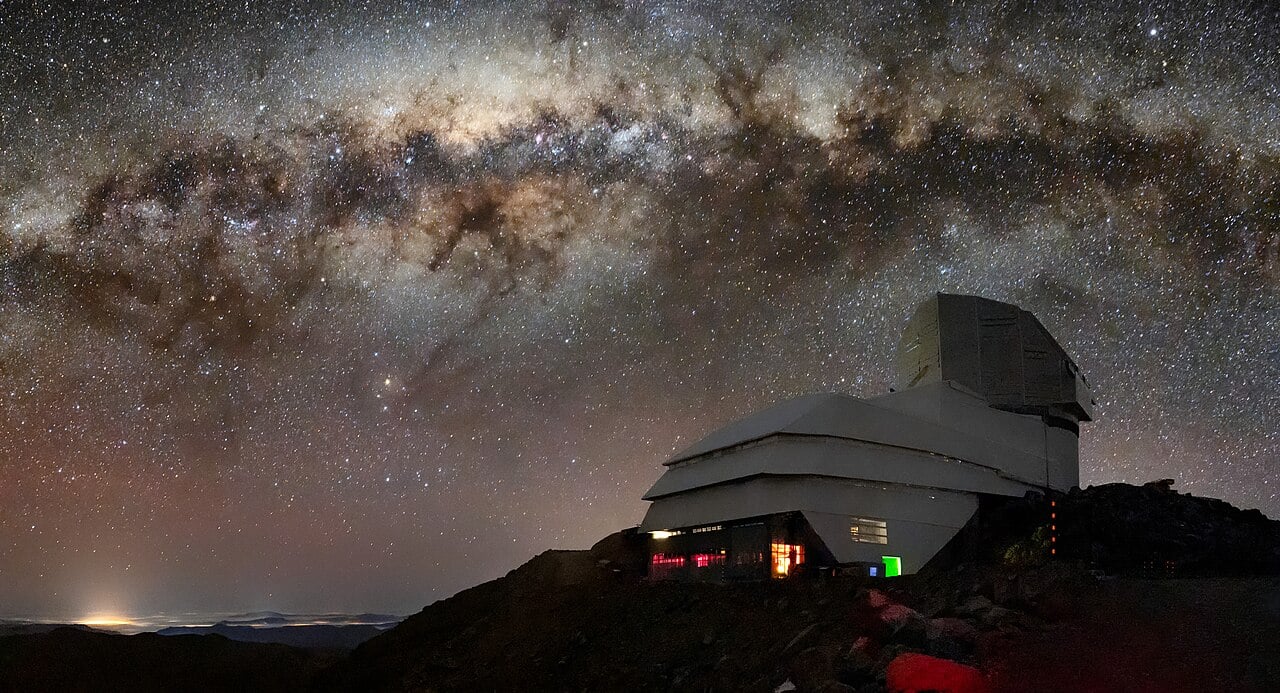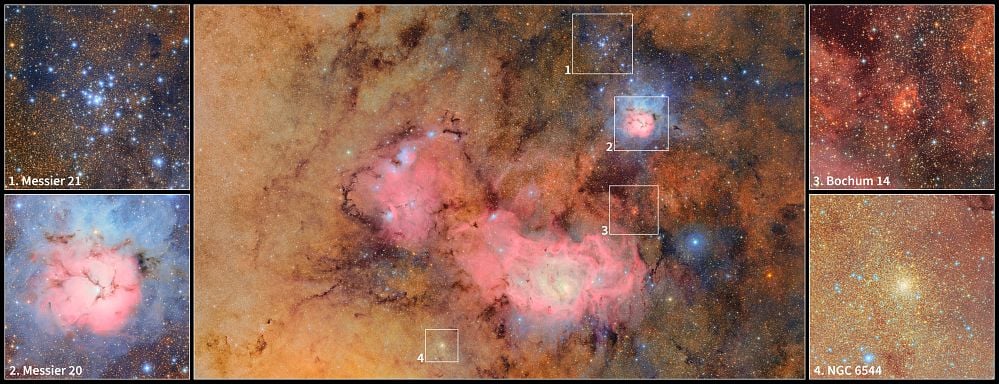The Vera C. Rubin Observatory, constructed in Chile's Atacama Desert, houses perhaps the most powerful survey telescope ever built. Named after the pioneering astronomer who provided crucial evidence for dark matter, the telescope features an 8.4-meter primary mirror and the world's largest digital camera at 3.2 gigapixels. It’s plan…. to conduct the Legacy Survey of Space and Time (LSST), photographing the entire visible southern sky every few nights for ten years. This unprecedented survey will catalog billions of galaxies and stars, track moving objects throughout the Solar System, and help scientists study dark matter, dark energy, and the changing universe with remarkable precision.
 Vera C. Rubin Observatory and the Milky Way (Credit : Rubin Observatory/NSF/AURA/B)
Vera C. Rubin Observatory and the Milky Way (Credit : Rubin Observatory/NSF/AURA/B)
We have been tracking the development of the telescope here at UniverseToday and we can now, finally and somewhat excitedly share details of the first images from this historic instrument. You can view them all yourself right here.
One of the images just released shows a stunning composite of the Trifid and Lagoon Nebula. The image combines 678 separate images taken in just over seven hours of observing time, revealing otherwise faint or invisible details in these wonderful examples of stellar nurseries. It shows the Trifid Nebula (positioned in the upper right) and the Lagoon Nebula (in the centre,) both located several thousand light years from Earth. They are clouds of gas and dust where new stars are born, and the extended exposure time allowed the camera to capture intricate details that would otherwise remain hidden. The image beautifully demonstrates the telescope's ability to combine multiple observations to reveal faint structures, displaying the full beauty of these distant stellar formation regions. The image clearly shows two of the main types of nebula in the universe. Emission and reflection nebulae differ in how they interact with starlight to create their distinctive colours. Red emission nebulae, such as the Lagoon Nebula in the image glow with their own light when ultraviolet radiation from hot, young stars ionizes hydrogen gas, causing it to emit the characteristic red hydrogen-alpha wavelength. Blue reflection nebulae like parts of the Trifid Nebula, however, don't produce their own light but instead scatter starlight from nearby stars, the fine dust particles preferentially scatter blue wavelengths while allowing red light to pass through.
 NSF-DOE Rubin Trifid and Lagoon nebulas with insets showing M21, Bochum 14 and NGC6544 (Credit : NSF-DOE Vera C. Rubin Observatory)
NSF-DOE Rubin Trifid and Lagoon nebulas with insets showing M21, Bochum 14 and NGC6544 (Credit : NSF-DOE Vera C. Rubin Observatory)
The second image released by the Rubin team reveals the Virgo Cluster with a fabulous level of detail. It shows a breathtaking mix of nearly 2,000 galaxies, with bright stars from our own Galaxy shining amongst them. Each of the scattered dots in the background represents a distant galaxy. Just take a moment to ponder that! The image reveals a chaotic jumble of merging galaxies (a process that plays a crucial role in the evolution of galaxies,) along with intricate details in the spiral structure of individual galaxies. Perhaps tantalisingly though, this image represents only a small section of the telescope's total field of view, yet this image still contains millions of galaxies.
 The Virgo Cluster (Credit : NSF-DOE Vera C. Rubin Observatory)
The Virgo Cluster (Credit : NSF-DOE Vera C. Rubin Observatory)
These first images represent just the beginning of what promises to be a fabulous decade in astronomy. When the Vera C. Rubin Observatory begins its full Legacy Survey of Space and Time later this year, it will detect about 10 million changes every night, allowing observations to catch transient phenomena they otherwise wouldn't know to look for; from exploding stars to passing asteroids. Over its ten year mission, Rubin is expected to discover 20 billion new galaxies, providing an unprecedented census that will help solve some of the deepest mysteries in cosmology, including the nature of dark matter and dark energy that Vera Rubin herself helped discover. I can't wait!

